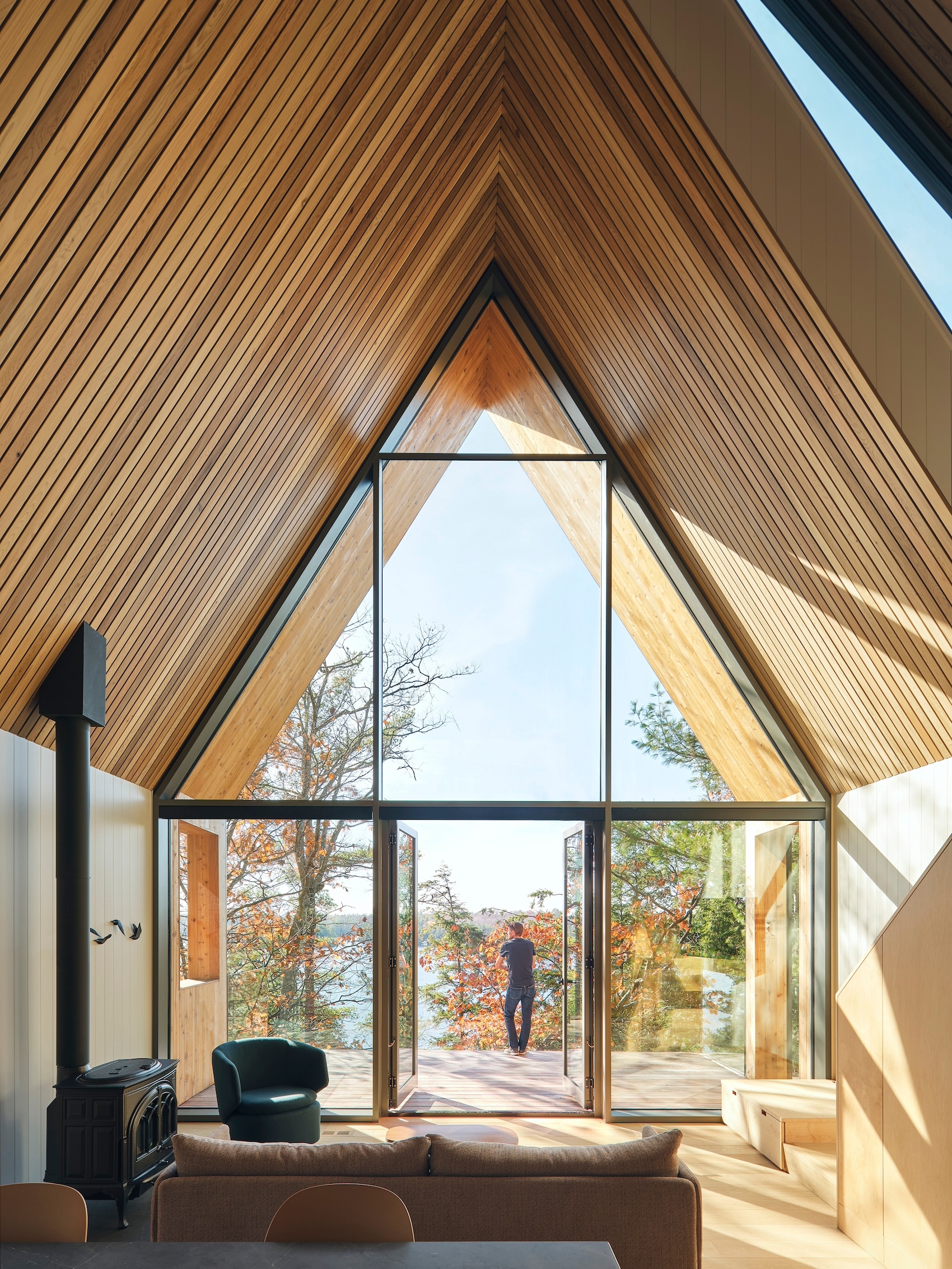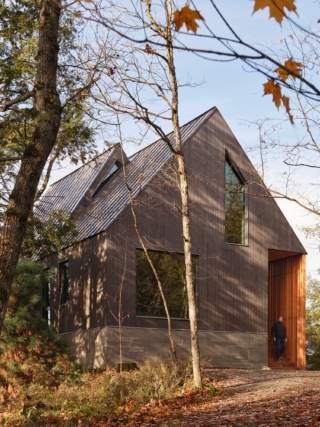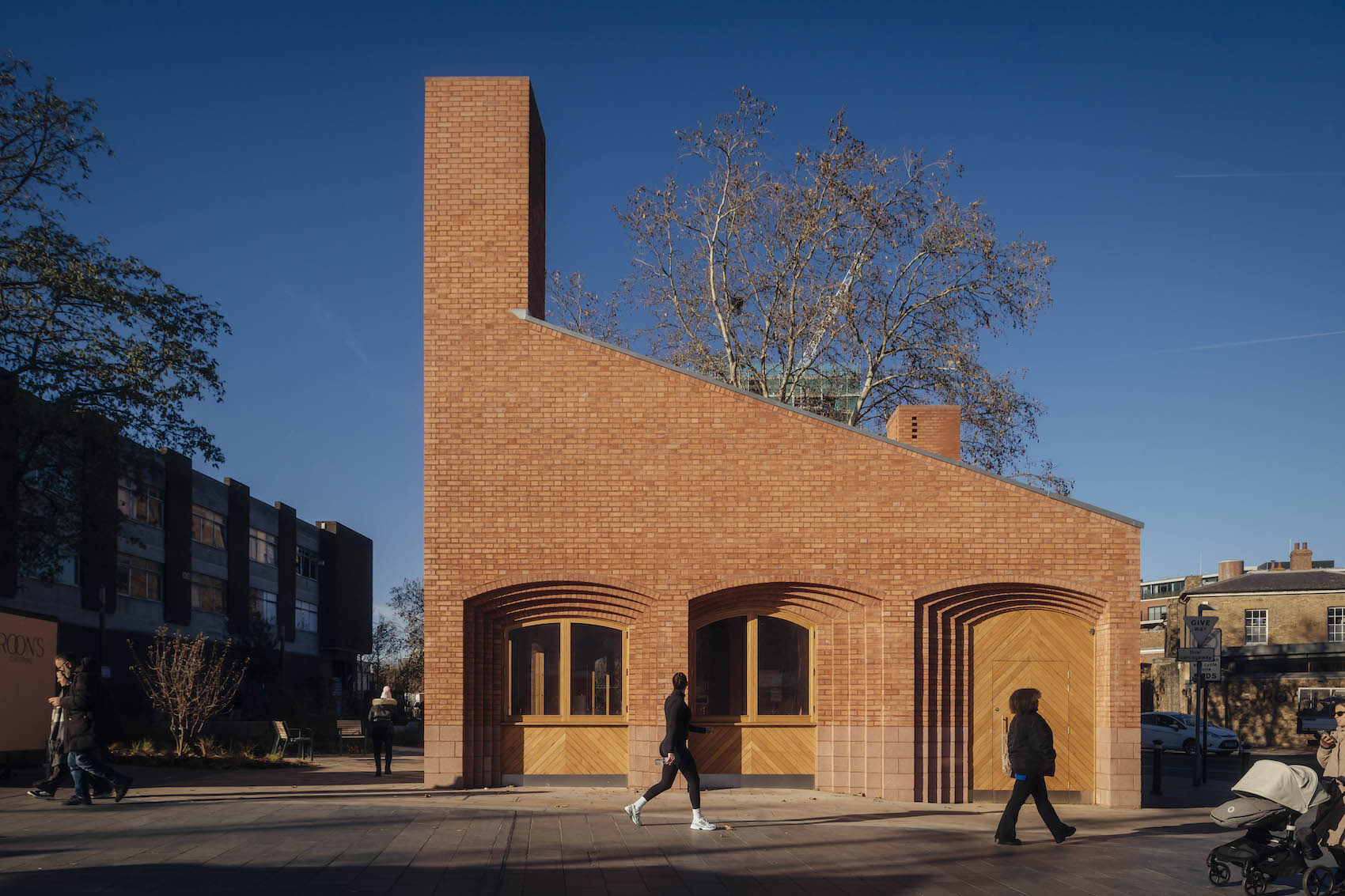Canadian studio Dubbeldam Architecture + Design has completed a quiet retreat in Muskoka, rural Ontario, for a client looking to reconnect with nature.
The smallest in a collection of cabins scattered across four family properties, Bunkie on the Hill serves as a space of respite for a family-oriented client in Muskoka, Ontario. Designed by Dubbeldam Architecture + Design, the 93-square-metre house is tucked into the trees at the top of a steep slope, providing a quiet space away from a series of multi-generational family cottages below.
A contemporary interpretation of the traditional A-frame structure evokes the quintessential cabin in the woods, differentiated by shifted roof volumes. Evoking the overlapping layers of rock in the surrounding landscape, the split roof design comprises two intersecting gables articulated by geometric windows. These provide framed views of the treetops on one side, and lake below on the other, while also flooding the interior with daylight.
The split roof design also generates distinct elevations on either side: a tall, narrow, glazed façade facing the lake, and a wider, more opaque elevation facing the forest, with a cut out for a covered entrance on the west side. Located midway along the side façade, the cabin’s entrance features a walkway with a slatted cedar screen, which echoes the tree trunks seen through framed views at each end. The cedar slats are animated by the changing west light that filters through its openings, producing a dynamic interplay of light and shadow.
The interior is functional, despite its compact size. Small nooks contain storage shelves or built-in benches. Each space provides framed views of the forest or lake. The upper loft area includes a built-in desk with a view down to the ground-floor living space and the lake beyond, as well as an extra space for sleeping. The bedroom is located at the rear and features a large window that offers immersive views of the forest.
Natural materials were chosen to complement the rustic landscape that surrounds the house. Greyed wood siding contrasts the natural cedar soffits and screen that frames the entrance, sitting atop the raw, board-formed concrete base. Material patination is intentional and welcomed as the house blends back into its forested hill setting.
Interior materials, including oak flooring, maple plywood, and cedar cladding, are grounded by dark charcoal window frames, grey stone counters, and furniture that offers moments of colour. “We used white wallboard to define the interior perimeter walls,” says practice principal Heather Dubbeldam. “Internal partitions are clad in maple plywood, and the ceiling is delineated by Western red cedar slats, bringing even more of the surrounding forest inside.”
Sustainability is central to the project. The thick exterior walls serve as a passive insulator (boasting an R-value of more than 40) and include triple-glazed windows. Flitch beams eliminate thermal bridges, despite the use of steel framing. To avoid the need for ground blasting, the house is raised above grade and its foundation constructed on top of the natural rock contours, allowing the structure to sit lightly on the landscape. Timber products are FSC-rated, while the plumbing and light fixtures are low flow and low energy.
Credits
Architect
Dubbeldam Architecture + Design
Structural engineer
Blackwell Structural Engineers
Main contractor
HLD Corporation




































